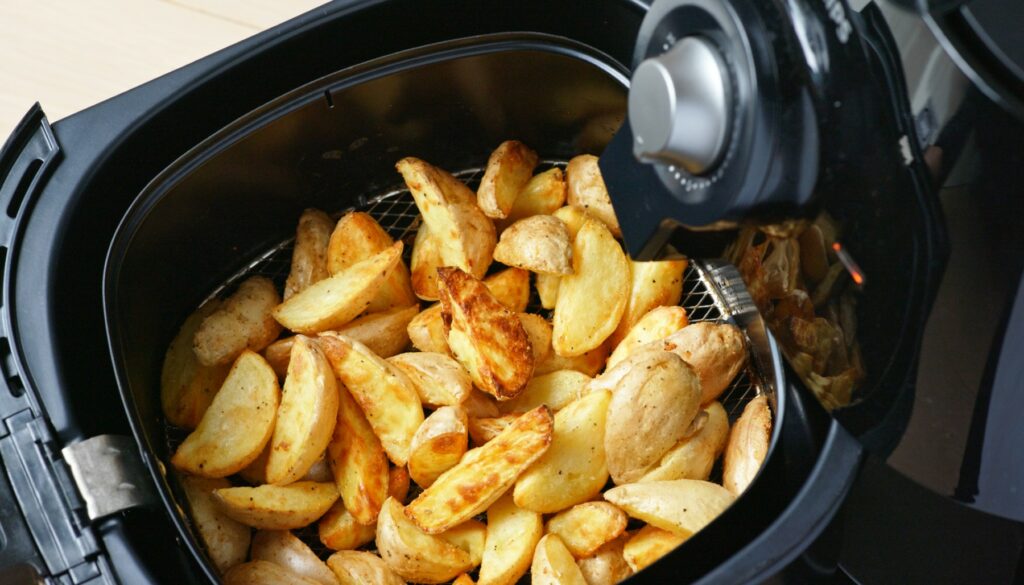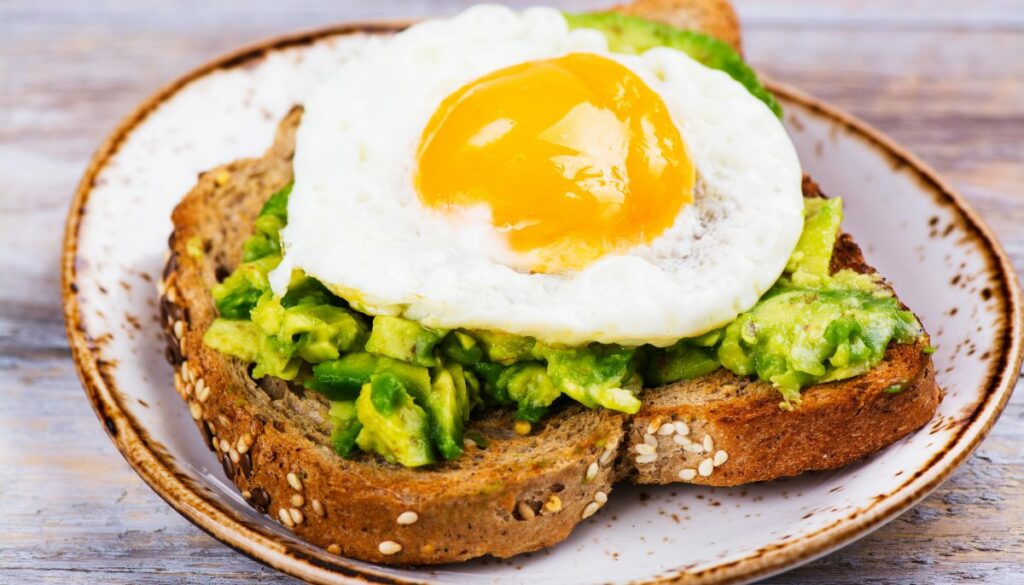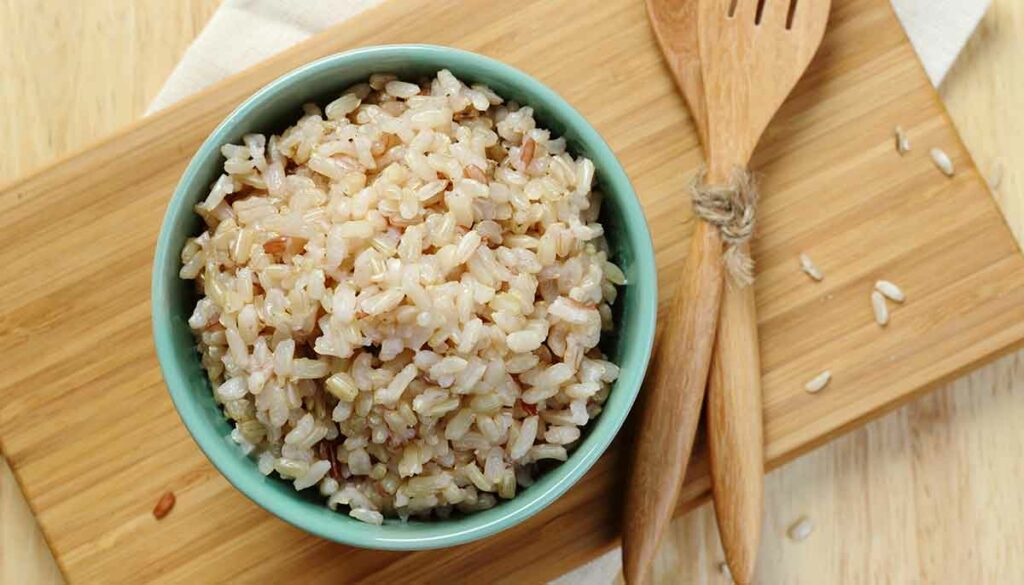For the most part, I’m pretty good about planning meals for the week.
I actually have a weekend routine to make sure I get it done. On Sunday mornings, I sit on the couch and watch all the informational cooking shows on Food Network. You know, the ones where chefs actually give you recipes and tips instead of competing against each other. Sometimes I get a good recipe, while other times I see an ingredient I want to try. Either way, it helps me plan a week’s worth of meals for an entire household. I put it all into my grocery order, and all those tasty foods arrive at my doorstep.
Pretty hard to mess that up, right?
Very rarely do I stray from that routine, but it does happen once in a blue moon. And that’s exactly what happened last week. The weekend was just so busy that I skipped right past turning on Food Network. It was Monday morning before I realized there were no groceries arriving.

Oops.
I could just swing by the grocery store if my weekdays – especially Mondays – weren’t so busy with work, carting kids around to school and extracurricular activities, laundry… Well, you get the idea. Having to add another task to my day is like cramming an oversized SUV into a compact car spot. It’s only going to work out under the most perfect conditions, and something is likely to get damaged.
Instead, I looked at what was hanging around in the pantry and the fridge. I ended up making a pasta dish, everyone was fed and happy, and I ordered my groceries that evening.
The key is having versatile ingredients on hand at all times. These are the items that go well with a ton of other ingredients and can be used in a variety of dishes.
Having versatile ingredients will do more than save a grocery ordering blunder, too. These easy items can also save you some money on your grocery bill and cut down on food waste. You can buy one item and use it to make two different meals. Restaurants often do this to save on food costs, and we can apply that same tactic at home, too.
Of course, you have to know which ingredients to stock up on. Not everything is versatile enough to fit the bill. I mean, there is only so much you can do with meringue powder.
No, we want to stock up on the multitaskers. The ingredients that are true chameleons in the kitchen. These are the foods we can depend on to pull their weight!
I’m going to skip over true kitchen basics, like butter or oil. You should have those regardless, and they sit in their own category! But other than those, these are the foods you should keep around.
Potatoes

I always say I’ve never met a potato I didn’t like. These starchy vegetables can be used in more ways than I can count! Trying to list them all would have me feeling like I was Bubba in Forrest Gump.
But really, potatoes can be used for breakfast, brunch, lunch, dinner, and late-night snacks. Shred them, dice them, slice them, or cook them whole. There’s really not a whole lot you can’t do with them. Plus, if you store potatoes correctly, they will keep for up to several months.
Aside from just cooking potatoes, you can also use their starchiness to your advantage in soups and sauces. Incorporate them to thicken liquids you would otherwise need flour or cornstarch for.
Related: Try These Tasty ‘Breakfast for Dinner’ Recipe Ideas
Tofu

Hardcore carnivores sometimes hate when I talk about tofu – but it’s literally just an ingredient that can be eaten by carnivores and vegans alike! If you’re a fan of hot and sour soup at the local Chinese restaurant, you already know that tofu can be a wonderful addition, even to dishes with meat.
Tofu is definitely a kitchen chameleon. Absolutely bland on its own, this soy-based product acts like a sponge to pick up any and all flavors you give it. You just have to press it before cooking to get rid of the excess water it was packed with. Treat it right, and it’ll be delicious baked, fried, grilled, scrambled, or crumbled.
Featured: Here Is Why You Should Add More Tofu to Your Diet
Soy Sauce

I probably use soy sauce more than I should. We often only think about it in terms of Asian-style dishes, but it does a really great job across many different cuisines. It is salty, but this fermented product is also bursting with umami flavor that a lot of foods can benefit from. This is a star ingredient that can be used many times over!
Soy sauce is a must-have ingredient for a lot of dipping sauces, but try to think outside the box. The next time you are cooking a stew or whipping up a marinade, try swapping salt for soy sauce. You might be pleasantly surprised by the results.
Eggs

Do you have a dozen eggs in your fridge? Because if not, this is one of those versatile ingredients you should always have in the fridge. Raw eggs last anywhere from three to five weeks after being placed in a fridge. Don’t be fooled by the expiration date, either. Just make sure you do a “float test” to ensure they’re still good.
Plain ol’ eggs have been a kitchen staple for so long, and for good reason. They really are one of the most versatile and most used ingredients. Obviously, you can cook an egg any number of ways all on its own. But they are also used in classic sauces, as a binder in burgers and meatballs, and in many of your favorite baked goods.
Broth

I say broth, but this also applies to stock and bouillon. They aren’t the same, but they are used similarly. Any of these three will work as a versatile kitchen staple that can easily take simple ingredients to the next level. Only have white rice and a can of beans? Throw some broth in your prep, and improve everything immediately.
The obvious use for any of these three is making soups and stews. However, they can be used for a lot more than that. I like to use them to boost the flavor of beans, and they can also do the same for rice and other grains. Amp up your protein marinades, or add extra punch to your next casserole.
Rice

When I forgot to order groceries, rice was what came to my rescue. I always buy a lot and keep some on hand. You know how everyone keeps countertop canisters filled with basics like flour and sugar? I have one for rice, too.
That’s because I can pair just about anything with rice. Whatever proteins or veggies you whip up, they will definitely go with a side of rice. Use rice to whip up a bowl of fried rice that uses up leftover veggies and one of those eggs you stocked up on. Or use rice to create rice pudding, put it in burritos, use it to create a casserole, or put it into a soup or stew.
Carrots

Out of all the vegetables out there, carrots might be one of the most versatile. I say that because carrots can be eaten raw or cooked; they are used to make both savory and sweet dishes; they pair well with tons of different flavors and are used in many different cuisines.
Whole, raw carrots can last for at least four to five weeks in the fridge, making them an excellent “just in case” ingredient to keep around. You can also freeze those whole carrots, and they’ll keep for up to a year! Use them to make cakes and other baked goods, toss them in a stir fry, or eat them raw in a salad. You can puree them into a soup, or roast them to perfection. They’re about on par with my beloved potatoes for uses!
Canned Beans

If there’s something I use even more than rice, it’s a good can of beans. This can include all kinds of different beans, like garbanzo, cannellini, lima, pinto, black beans, and more. Cans of beans are inexpensive and have really long shelf lives. I usually pick up a can or two each time I order groceries, just in case.
There are so many different kinds of beans, so the possibilities really depend on which variety you get. But for example, black beans and pinto beans are a must for tacos, burritos, and other Mexican dishes. Beans are perfect for chili, soups, and stews. Chickpeas in particular are excellent roasted with some salt and pepper, but are also the foundation for hummus. Plus, black beans, chickpeas, and other varieties are the foundation of a good vegetarian burger patty.













